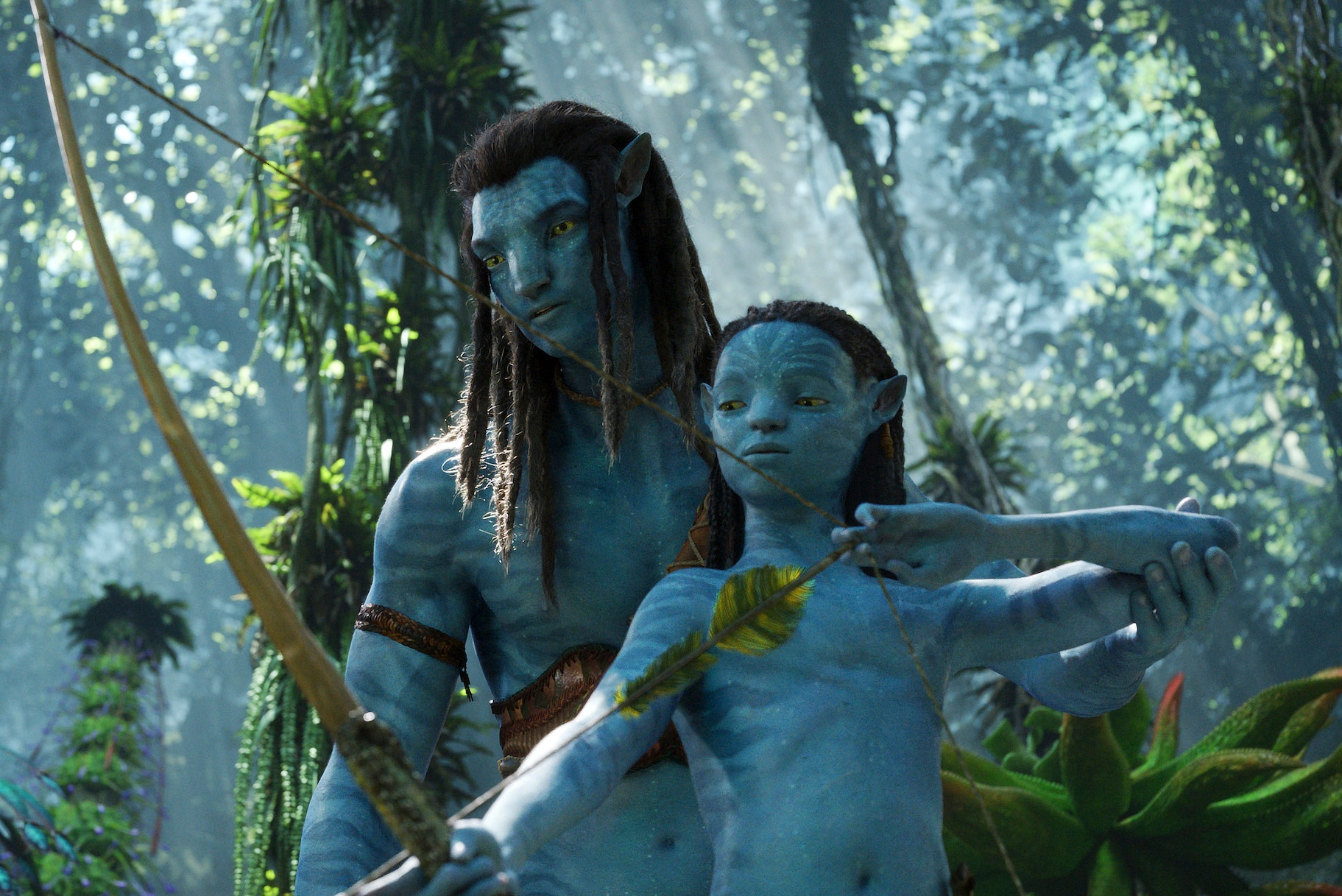Create a free profile to get unlimited access to exclusive videos, sweepstakes, and more!
Every bit of VFX in 'The Way of Water' had to be fully rebuilt from the first 'Avatar'
Returning to Pandora wasn't just a matter of reusing an old Na'vi or Banshee model.

After 13 years, moviegoers have returned to Pandora because Avatar: The Way of Water is now in theaters. However, for the VFX animators behind the film, it wasn’t just a matter of “going back” to the Pandora that had been created for James Cameron’s 2009 original film. As supervisors and animators told SYFY WIRE, every aspect of the film — even the parts that seem like they could have just been reused from the first Avatar — had to be totally rebuilt for The Way of Water.
“Everything is new since the first film. The models are new, the shaders are new, everything is new,” Dan Barrett, The Way of Water’s senior animation supervisor, explained during a VFX press junket on the Disney lot before the film’s premiere. “We've got our guidebook in terms of the first film, in terms of the way light responds with them, the way the shaders work, the way the face moves, these things have all advanced.”
Anything you see in The Way of Water might have been inspired or based on imagery, techniques, and digital assets from the first movie, but none of it was directly ported over. There are a few scenes, Barrett said, that are basically shots from the first film. (Barret didn’t specify, but the “footage” that the Recombinant Quaritch watches of his human self’s death could, perhaps, be one example.)
“Jim would be like, ‘Why can't you just reinstate that from the first film?’” Barret recalled. “And that's just not something we could do. None of it worked with our pipeline. None of it worked with our assets. There was nothing we could do. We just had to rebuild those shots and make them look like the first film only, you know, better.”
Indeed, while the first Avatar was groundbreaking on a technological level, CGI and filmmaking techniques have progressed in the decade since that film. For instance, the system the animators used to create Jake Sully, Neytiri, and the other Na’vi’s faces in the ‘09 film was “surface level” compared to the new technique that goes under the digital skin with “170-odd muscle strains within the face.”
RELATED: Avatar: The Way of Water Animators Explain How the Ocean Na'vi Are Different
The Na’vi models have more detail to them, with more pores and higher fidelity to the actors providing the motion-capture than the techniques used in the first film. This isn’t just the same old Jake Sully — although he is older now, which matters.
“We took advantage of the fact that the story was 15 years later as part of the aging process for Jake and Neytiri to add that extra detail into the skin,” senior VFX supervisor, Joe Letteri, explained. "Pores, wrinkles, all those sorts of things. It is there, but also I think what's more important is what we now know under the hood. We've got a much better understanding of how the muscles in the face work, how that drives expression, and how that goes into the crafted performance. So, we actually did have to rebuild the models to support that as well, because when you're building a character and designing the character, it's all about motion.”
“We were incredibly lucky in the sense that it's a story about family and both Sam [Worthington] and Zoe [Saldaña], our lead actors, went off and had children in between the two movies. So not only did they age appropriately, but I think their empathy for being a parent in a situation like that is rife,” added Richie Baneham, executive producer and virtual second unit director. “It just enhances the performances tenfold.”
It wasn’t just the Na’vi that got slight visual upgrades to match the significant technological upgrades. Wayne Stables, a VFX supervisor who worked on the film and specialized on the jungle sequences in the first hour of The Way of Water (“I quite deliberately decided to stay there because I think it'll be easier than all the ocean stuff,” he joked), said the jungle got some aesthetic tweaks.
“The design changed a bit. Still need to be recognizable to it, but if you, like, its fidelity had to be lifted up,” he said. “Technically it’s very, very different. It's like 10 years of technology, you know, inside there. That was probably one of the biggest challenges — making it still look like the first film’s jungle while meeting an audience's expectations of 10 years of visual effects in terms of stuff just looking better.”
All of the VFX folks SYFY WIRE spoke to stood behind the effects in the ‘09 Avatar, however. Just because technology has improved doesn’t mean that the first one looks bad, even as CGI tends to age notoriously poorly compared with other types of special effects.
“I think it's part of our process of trying to get it right,” Letteri said. “That's what we tried to do on the first film, with some degree of success. But, obviously, there was a lot we couldn't do at the time, and that's what we try to do even more here. That’s always the intent: with the tools you have, can you make it look like you went out and shot this movie for real?”
Avatar: The Way of Water is now in theaters.
In the mood for more James Cameron awesomeness? Stream True Lies right now on Peacock!


























